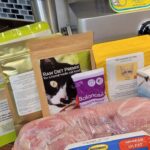Copper is an essential trace mineral vital for various bodily functions, including energy production, iron metabolism, and nerve function. Understanding which foods are rich in copper is crucial for maintaining optimal health. The Food and Nutrition Board at the National Academies of Sciences, Engineering, and Medicine provides Dietary Reference Intakes (DRIs) for copper to guide healthy individuals in planning and assessing their nutrient intake.
Recommended Dietary Allowance (RDA) represents the average daily intake sufficient to meet the nutrient requirements of nearly all (97% to 98%) healthy individuals, grounded in scientific research. Adequate Intake (AI) is established when scientific evidence is insufficient to determine an RDA, set at a level presumed to ensure nutritional adequacy.
Dietary Reference Intakes for copper are as follows:
Infants (AI):
- 0 to 6 months: 200 micrograms per day (mcg/day)
- 7 to 12 months: 220 mcg/day
Children (RDA):
- 1 to 3 years: 340 mcg/day
- 4 to 8 years: 440 mcg/day
- 9 to 13 years: 700 mcg/day
Adolescents and adults (RDA):
- Males and females age 14 to 18 years: 890 mcg/day
- Males and females age 19 and older: 900 mcg/day
- Pregnant females: 1,000 mcg/day
- Lactating females: 1,300 mcg/day
To meet these daily copper requirements, consuming a diverse and balanced diet is key.
Top Food Sources of Copper
So, What Food Has Copper In It? Here’s a breakdown of some of the best dietary sources:
- Shellfish: Oysters, clams, and other shellfish are excellent sources of copper. Oysters, in particular, are known for their high copper content.
Alt text: Fresh oysters on ice with lemon, showcasing a copper-rich seafood source.
-
Organ Meats: Liver, kidney, and other organ meats are exceptionally rich in copper. Beef liver is a particularly potent source.
-
Nuts and Seeds: Cashews, almonds, sunflower seeds, and sesame seeds are good plant-based sources of copper.
Alt text: Assorted nuts and seeds including cashews, almonds and sunflower seeds, highlighting natural copper sources.
-
Chocolate: Dark chocolate, in particular, provides a significant amount of copper. Enjoying a moderate portion can contribute to your daily intake.
-
Whole Grains: Whole wheat bread, brown rice, and other whole grains contain copper, although in smaller amounts compared to other sources.
-
Legumes: Beans, lentils, and other legumes are decent sources of copper, especially when consumed regularly as part of a balanced diet.
Alt text: Bowls filled with various dried legumes like beans and lentils, showing plant-based copper options.
- Leafy Green Vegetables: While not as concentrated as other sources, spinach and other leafy green vegetables do contribute to your overall copper intake.
Factors Affecting Copper Absorption
It’s important to note that several factors can influence how well your body absorbs copper from food. These include:
- Zinc Intake: High zinc intake can interfere with copper absorption.
- Vitamin C: Very high doses of Vitamin C can reduce copper absorption.
- Phytic Acid: Phytic acid, found in grains and legumes, can inhibit copper absorption. Soaking or sprouting these foods can help reduce phytic acid content.
Copper Deficiency
While copper deficiency is relatively rare, it can occur due to certain medical conditions or dietary imbalances. Symptoms of copper deficiency can include anemia, fatigue, and neurological problems.
Getting Enough Copper Through Diet
Eating a varied and balanced diet is the best way to ensure you’re getting enough copper. Focus on incorporating copper-rich foods like shellfish, organ meats, nuts, seeds, and dark chocolate into your meals. Keep in mind the factors that can affect copper absorption and adjust your diet accordingly. Specific recommendations depend on age, sex, and other factors (such as pregnancy). Women who are pregnant or producing breast milk (lactating) need higher amounts. Consult with your healthcare provider or a registered dietitian for personalized advice on meeting your copper needs through diet.
By understanding what food has copper in it and how to optimize its absorption, you can ensure you’re getting enough of this essential mineral for optimal health.
